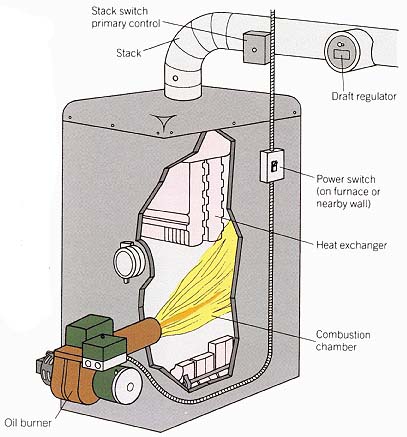Of the several oil-burner varieties, the gun-type high-pressure oil burner is the most common. The oil burner is usually bolted to the outside of the furnace. In addition to a thermostat, an oil burner has a primary control relay connected to a flame sensor. It shuts off the burner if the oil spray doesn’t ignite, preventing dangerous oil buildup.
Maintenance. Before each heating season, have your system checked, cleaned and adjusted by a service person; it’s not a do-it-yourself project. Keep the burner area clean. Periodically vacuum with a crevice tool in the openings that admit air to the burner’s blower. Don't sweep dirt under the burner.
Increasing efficiency. If there is an observation window, look at the flame; it should be bright yellow and produce no smoke. If it’s dark orange or sooty, or if one notices smoke exiting from the chimney outside, have the burner adjusted.
The oil burner is usually bolted to the outside of the furnace or boiler, but sometimes it’s inside the jacket. In this case, a removable metal panel provides access to the burner. If one has a service contract, think twice before doing any work on the burner. Most contracts are voided if you work on the burner.
Note: A modern oil burner uses a flame-sighting control (built into the burner itself) instead of a stack switch.



